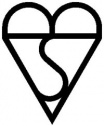Kitemark
The Kitemark was first introduced by BSI (the British Standards Institute) in 1903. It is commonly found on many products, including construction products. It indicates that the product has been independently tested by BSI to confirm that it complies with relevant British Standards, and that BSI have licensed the product manufacturer to use the Kitemark.
Manufacturers have to pay to have their products and manufacturing processes tested, and these tests are repeated regularly to confirm continued compliance.
This is not the same as CE marking. CE stands for Communauté Européenne. CE marking signifies that a product complies with relevant safety, health or environmental regulations across the European Economic Area (EEA).
[edit] Related articles on Designing Buildings Wiki
- Agrément certificate.
- BBA becomes an Approved Body for UKCA Marking.
- Brexit standards, products and regulatory updates.
- British Board of Agrément.
- British standards.
- CE marking.
- Construction products regulations.
- European Technical Approval.
- Gas Safe.
- Label.
- Manufacturer’s certificate.
- Radio frequency identification.
- Standards.
- Third party accreditation.
Featured articles and news
Latest Build UK Building Safety Regime explainer published
Key elements in one short, now updated document.
UKGBC launch the UK Climate Resilience Roadmap
First guidance of its kind on direct climate impacts for the built environment and how it can adapt.
CLC Health, Safety and Wellbeing Strategy 2025
Launched by the Minister for Industry to look at fatalities on site, improving mental health and other issues.
One of the most impressive Victorian architects. Book review.
Common Assessment Standard now with building safety
New CAS update now includes mandatory building safety questions.
RTPI leader to become new CIOB Chief Executive Officer
Dr Victoria Hills MRTPI, FICE to take over after Caroline Gumble’s departure.
Social and affordable housing, a long term plan for delivery
The “Delivering a Decade of Renewal for Social and Affordable Housing” strategy sets out future path.
A change to adoptive architecture
Effects of global weather warming on architectural detailing, material choice and human interaction.
The proposed publicly owned and backed subsidiary of Homes England, to facilitate new homes.
How big is the problem and what can we do to mitigate the effects?
Overheating guidance and tools for building designers
A number of cool guides to help with the heat.
The UK's Modern Industrial Strategy: A 10 year plan
Previous consultation criticism, current key elements and general support with some persisting reservations.
Building Safety Regulator reforms
New roles, new staff and a new fast track service pave the way for a single construction regulator.
Architectural Technologist CPDs and Communications
CIAT CPD… and how you can do it!
Cooling centres and cool spaces
Managing extreme heat in cities by directing the public to places for heat stress relief and water sources.
Winter gardens: A brief history and warm variations
Extending the season with glass in different forms and terms.
Restoring Great Yarmouth's Winter Gardens
Transforming one of the least sustainable constructions imaginable.
























